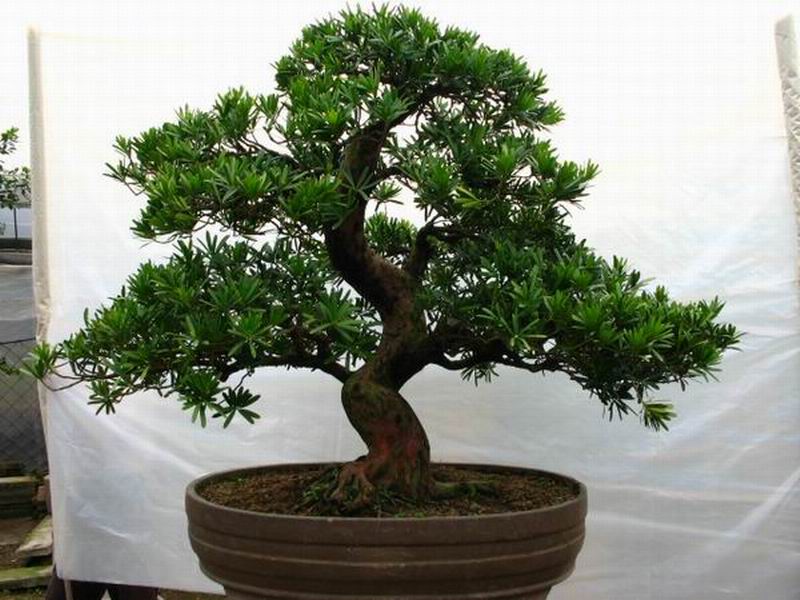PLOS ONE:德美科学家鉴别出320个罗汉松科植物个体样本DNA条形码
德国波鸿鲁尔大学和纽约植物园的科学家在新研究中,鉴定了来自世界多个地区的320个罗汉松科植物个体样本的DNA条形码。这些DNA条形码有助于这类珍稀濒危物种的保护和管理。相关文章发表于2013年11月27日的《PLoS ONE》杂志上。

PLOS ONE:德美科学家鉴别出320个罗汉松科植物个体样本DNA条形码
在热带地区和亚热带地区,许多常绿的松柏类植物都濒临灭绝。德国波鸿鲁尔大学(RUB)的生物学家们,收集了世界上最大的罗汉松科(Podocarpaceae)植物资源库。
为了生成每个物种的 “DNA条形码”, 他们与纽约植物园的同事们一起,测定了这些松柏类植物DNA序列的特征部分。借助于这些遗传指纹,外表上非常相似但未被鉴定的个体,能够被分类到各自的罗汉松科物种。因此,濒危种群中的个体,能够被更加容易地鉴定。
许多罗汉松科植物很难、或者不可能被鉴定
RUB植物进化和生物多样性系的Patrick Knopf博士称:“与覆盖大面积的欧洲本地松柏类植物森林不同,许多罗汉松科植物的分布范围非常小,经常以几个分散的个体分布。原产于斐济群岛的一个物种,目前大约只剩下十个个体。”为了保护这些濒危物种的罕见代表,首先很有必要进行物种鉴定。
RUB生物学家Christian Schulz博士解释说:“,仅仅通过罗汉松科植物的外貌特征,很难、甚至不可能鉴定它们,这也是为什么我们要启动DNA条形码项目的原因所在。”
濒危物种的传播和交换
波鸿的研究者在南美洲、东南亚、澳大利亚、新喀里多尼亚和斐济群岛的实地考察旅行中,收集了145个罗汉松科物种中的320个个体。在植物园的辉瑞植物研究实验室里,他们与植物园的科学家Damon Little博士一起,解析了所有这些个体的DNA条形码,然后他们将这些序列提交到GenBank中。
而且,他们还在波鸿鲁尔大学植物园内,做了一个罗汉松科植物的活体收集库,以促进这种珍稀濒危物种的保护。波鸿团队还对这个物种进行繁殖,并将它们传播到世界各地的其他植物园中。
木材产业和癌症研究的关系
罗汉松科,是一个常绿树木家族,是第二大松柏植物类家族。它们主要生长在南半球的多山地区。因为其出色的抗昆虫和抗真菌能力,198个物种中有许多都是良好的木材,具有重要的经济价值。
而且,它们叶片中含有各种各样的生物活性成分例如抗氧化剂、Nordi–萜烯、罗汉松酸和桃柘酚,这些成分中一些具有抗菌、抑制真菌或者制菌的性能。其它成分具有细胞毒素的性能,对于癌症研究具有越来越重要的作用。当前,濒危植物红色目录(IUCN)包括27个罗汉松科物种。总共有86个物种是濒危的。、
原文摘要:
DNA Barcode Identification of Podocarpaceae—The Second Largest Conifer Family
Damon P. Little, Patrick Knopf, Christian Schulz
We have generated matK, rbcL, and nrITS2 DNA barcodes for 320 specimens representing all 18 extant genera of the conifer family Podocarpaceae. The sample includes 145 of the 198 recognized species. Comparative analyses of sequence quality and species discrimination were conducted on the 159 individuals from which all three markers were recovered (representing 15 genera and 97 species). The vast majority of sequences were of high quality (B30 = 0.596–0.989). Even the lowest quality sequences exceeded the minimum requirements of the BARCODE data standard. In the few instances that low quality sequences were generated, the responsible mechanism could not be discerned. There were no statistically significant differences in the discriminatory power of markers or marker combinations (p = 0.05). The discriminatory power of the barcode markers individually and in combination is low (56.7% of species at maximum). In some instances, species discrimination failed in spite of ostensibly useful variation being present (genotypes were shared among species), but in many cases there was simply an absence of sequence variation. Barcode gaps (maximum intraspecific p–distance > minimum interspecific p–distance) were observed in 50.5% of species when all three markers were considered simultaneously. The presence of a barcode gap was not predictive of discrimination success (p = 0.02) and there was no statistically significant difference in the frequency of barcode gaps among markers (p = 0.05). In addition, there was no correlation between number of individuals sampled per species and the presence of a barcode gap (p = 0.27).

